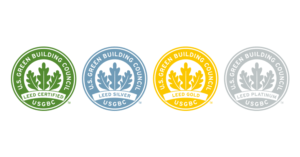Developing a framework for Resident Safety Risk Assessment
Resident safety issues in LTC facilities—skilled nursing, assisted living and dementia/Alzheimer’s care facilities—have increasingly attracted attention from practitioners, researchers and decision makers in recent years. As one of the efforts to enhance resident safety, The Center for Health Design (CHD) worked with others to develop a Resident Safety Risk Assessment framework focusing on the design of the LTC physical environment. The Resident Safety Risk Assessment framework has been proposed for inclusion in the 2014 Facility Guidelines Institute, Proposed Volume 2: Guidelines for Design and Construction of Long Term Residential Health, Care, and Support, and Related Facilities.
The Resident Safety Risk Assessment is intended to serve as a broad evaluation framework for the key design areas that impact resident safety in various residential care settings (e.g., noise, light levels, design of outdoor spaces). To support its development, a literature review was conducted to identify research evidence that empirically supports the linkages between certain design elements and safety outcomes in LTC facilities and identifies areas where additional research is needed.
LITERATURE REVIEW
An extensive literature search was conducted through keyword searching in CHD’s database of evidence-based design literature, PubMed, EBSCOhost and other databases such as Google Scholar, as well as by examining several existing literature reviews on similar topics. The initial list of more than 100 publications was further narrowed down to 55 articles that empirically demonstrated the connection between the physical environment and resident safety outcomes in LTC and similar settings.
Based on the detailed analysis of the selected articles, a matrix was created to summarize the relationships between safety outcomes and environmental factors. The matrix includes the following information: research settings, key research findings, strength of evidence, literature reference information, the strength of evidence and design recommendations.
RELATIONSHIP BETWEEN DESIGN, SAFETY OUTCOMES
The resident safety outcomes were classified into six main categories: resident falls, resident elopement/unsafe exiting, sleep disorders, aggressions/disruptive behaviors, medical errors and healthcare-associated infections. The six safety outcomes were impacted by multiple environmental variables as shown in an abridged version of the matrix/framework (see table at end of article).
Research settings in the matrix only indicate where research has been conducted. Even though some research evidence was collected in only one or two types of LTC settings, the findings are likely applicable to other settings. The following is a brief summary of key findings.
Resident falls
Resident falls are one of the leading causes of resident injuries and liability claims in LTC. Research identified lighting, furniture, flooring, wander gardens and assistive or restrictive devices as the key environmental design elements impacting resident falls. The review found:
● High lighting level and light glare reduction were associated with reduced fall risk.
● Selecting low-height furniture, positioning furniture (e.g., beds) against walls and allowing more maneuvering space between furniture pieces were found to prevent residents from accidentally falling from beds or chairs and reduce fall-related injuries.
● Flooring surface materials with small motifs and lowest contrast as well as soft sub-floor improved walking and reduced falls and fall-related injuries.
● Residents with dementia who had access to wander gardens tended to experience fewer falls than those without access.
● Appropriate configuration of grab bars in the bath and toilet areas may contribute to a reduction in resident falls in bathrooms.
● Some restrictive devices, such as bedrails, were related to more severe injuries and should be avoided.
Resident elopement/unsafe exiting
Unsafe exiting may potentially cause great dangers or even deaths to residents with dementia. Environmental measures effective to reduce unsafe exiting behaviors among dementia residents included providing a soothing atmosphere, reducing visibility of exit doors and providing a safe outlet, such as a wander garden. Research found that:
● A soothing and healing environment with appropriate nature scene artworks, plants, nature sounds, music and aroma could reduce anxiety and unsafe exiting behaviors.
● Visual barriers (such as cloth panels covering door knobs and window blinds blocking outside views) helped hide exit doors and doorknobs, and reduced exit-seeking and unsafe exiting behaviors.
Sleep disorders
Sleep disorders may cause safety problems including falls, delirium, morbidity and mortality. Multiple environmental measures have been found to improve sleep quality by reducing nighttime awakenings and daytime sleep. These environmental measures included:
● higher lighting level during daytime including exposure of bright light and sunlight
● control of environmental disturbances (e.g. noise, light variation) during nighttime
● single rooms preventing disturbances from roommates
● outdoor spaces that provide exposure to nature and bright light for dementia residents
Aggressive/disruptive behaviors
Agitation and aggressive behaviors are a special problem among LTC residents. Lighting design, spatial layout and positive distractions were the three key environmental aspects impacting resident agitation and aggression. Research found that:
● Effective lighting design methods in reducing agitation and aggression included high lighting level, bright light exposure, high color contrast, maintaining constant lighting level and blocking afternoon sunlight.
● Crowdedness was found to be a contributing factor of agitation and aggression. One effective method of preventing aggressive and disruptive behaviors was single-room design that separated residents and reduced spatial density.
● A body of research research indicated that positive distractions such as nature stimuli and wander gardens reduced anxieties and disruptive behaviors.
Medical errors
Although there was no empirical research conducted in LTC settings that directly examined the effects of the built environment on medical errors, some research evidence from other healthcare settings might be relevant and applicable to LTC design. For example, research in acute care settings found that medication-dispensing errors could be significantly reduced by increasing lighting levels and reducing environmental distractions and interruptions. This evidence had implications on the lighting and layout design of medication workspaces in LTC settings, although their effectiveness has yet to be verified by research.
Healthcare-associated infections (HAI)
Multiple studies in nursing homes support the notion that single-bed patient rooms might reduce the risks of residents contracting infections such as urinary bacterial infections, influenza A and nonbacterial gastroenteritis. Other effective environmental measures of infection control in acute care settings (e.g., air filtration, easy-to-clean materials) might be equally valuable in LTC facilities.
CONCLUSION
Physical environment is an important component of the systematic approach to resident safety. All of the referenced* design features should be considered in the design and evaluation of LTC projects. However, several design features stand out and warrant special attention because each of them impacts multiple categories of safety outcomes. These include:
● single room—improving sleep, reducing agitation and reducing HAI risks;
● high lighting levels—reducing falls, agitation and errors;
● exposure to bright light and sunlight—reducing sleep disorders and disruptive behaviors;
● outdoor nature/wander gardens—reducing falls, agitation and aggression and improving sleep;
● noise reduction, music and nature sounds—reducing sleep disorders and agitation;
● soothing, homelike and aesthetic interior environment that provides positive distractions—reducing unsafe exiting, agitation and aggression.
Xiaobo Quan, PhD, EDAC, is research associate for The Center for Health Design. Anjali Joseph, PhD, EDAC, is the director of research at The Center for Health Design. They can be reached at xquan@healthdesign.org or ajoseph@healthdesign.org.
Acknowledgment
The authors thank the Hulda B. and Maurice L. Rothschild Foundation for providing funding for this project.
* Editor’s note: A reference list, not included due to the space limitation, is available through the authors upon request.
Resident safety outcomes | Design features | Design recommendations |
| Resident falls | Visual environment: lighting levels, glare | Light glare should be avoided. Ambient lighting level should be above the recommended values for residential buildings. |
| Bed rails/physical restraints | Remove bed rails from skilled nursing beds unless required. | |
| Location and design of furniture | The arrangement of furniture should allow more room for resident maneuvering and to prevent falls. The ergonomics of furniture (e.g., lower bed height) should help reduce the likelihood of fall and injury. | |
| Handrails and grab bars | One bar should be mounted on the head of faucet wall of the bathtub; a second horizontal or angled bar should be located on the back wall of the tub; non-slip surfaces should be on the bath front and back rims. | |
| Flooring/flooring design: carpet texture, carpet pattern, sub-floor | Avoid using high pile carpets. Use carpet with small motifs/patterns and low contrast. Use soft sub-floors (such as wooden sub-floor) instead of hard sub-floors (such as concrete sub-floor). | |
| Wander gardens | Provide wander garden for residents with dementia. | |
| Resident elopement/unsafe exiting | Ambience: positive distractions, soothing environment | Provide soothing, calming, positive distractions such as nature pictures, nature sounds, smells of forests, home scenes and music inside the facility. |
| Design of exit doors: visual barriers | Use visual barriers such as masking tapes, cloth panels and/or wall mural design to camouflage the exit doors and doorknobs. Block the views to outside around exit doors. | |
| Access to safe outdoor areas | If possible, provide safe outdoor areas that can be accessed from exit doors. Provide safe transitions between indoor and outdoor areas. | |
| Sleep disorders | Sunlight exposure | Provide ample sunlight exposure in and around the building. |
| Exposure to artificial bright light | Provide artificial bright light exposure (>1500 lux). | |
| Illumination level | Design the ambient lighting so that the illumination level is high. | |
| Reduced nighttime noise and disturbance: light change, environmental noise | Reduce or eliminate environmental factors causing sleep disturbance such as noise, light changes and disruption from roommates. | |
| Room occupancy: single room | Provide single rooms. | |
| Access to outdoors | Provide access to outdoors for nursing home residents with dementia. | |
| Aggression/disruptive behaviors | Unit size | Reduce unit size (< 20 residents per unit). |
| Ambience: positive distractions, aesthetics and amenities, house-like small unit | Provide positive distractions such as nature scenes, sounds, and smells, home scenes and music in the corridors. Integrate homelike elements in the environment design such as private rooms, private bathrooms, shaded lights, lowered ceiling, full carpet, and non-institutional furniture. | |
| Room occupancy: single room | Provide single rooms. | |
| Music/nature sounds/noise | Provide access to nature sounds. Reduce loud noises. | |
| Light levels, bright light, blocking afternoon sunlight | Increase the illumination level of ambient lighting. Block afternoon sunlight from entering patient rooms, keep lighting level constant during afternoon. | |
| Access to nature/outdoors | Provide wander gardens and convenient access to natural elements. | |
| Medical errors | Light levels | Improve illumination level in pharmacy dispensing area. |
| Unit design to reduce interruptions | Reduce or eliminate distractions or interruptions (such as noise, other unrelated activities)—separate pharmacy dispensing area from other activities | |
| Healthcare-associated infections | Room occupancy: single room | Provide single rooms. |
| Cleanliness and ambience: odors, noises, home-likeness, environmental quality | Improve the quality of ambient environment (cleanliness, homelikeness, odors, noises, etc.) |
I Advance Senior Care is the industry-leading source for practical, in-depth, business-building, and resident care information for owners, executives, administrators, and directors of nursing at assisted living communities, skilled nursing facilities, post-acute facilities, and continuing care retirement communities. The I Advance Senior Care editorial team and industry experts provide market analysis, strategic direction, policy commentary, clinical best-practices, business management, and technology breakthroughs.
I Advance Senior Care is part of the Institute for the Advancement of Senior Care and published by Plain-English Health Care.
Related Articles
Topics: Articles , Design , Housing











